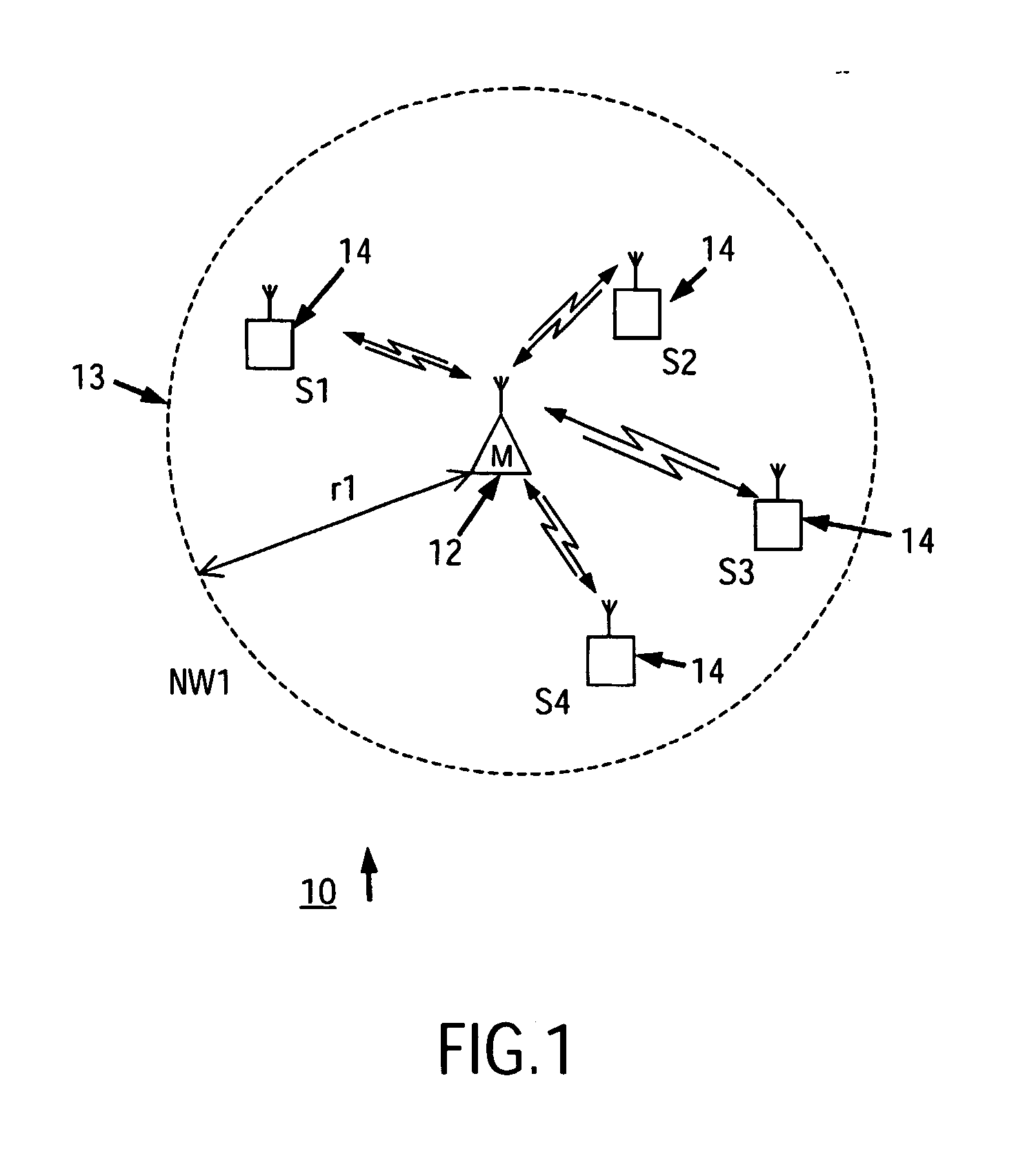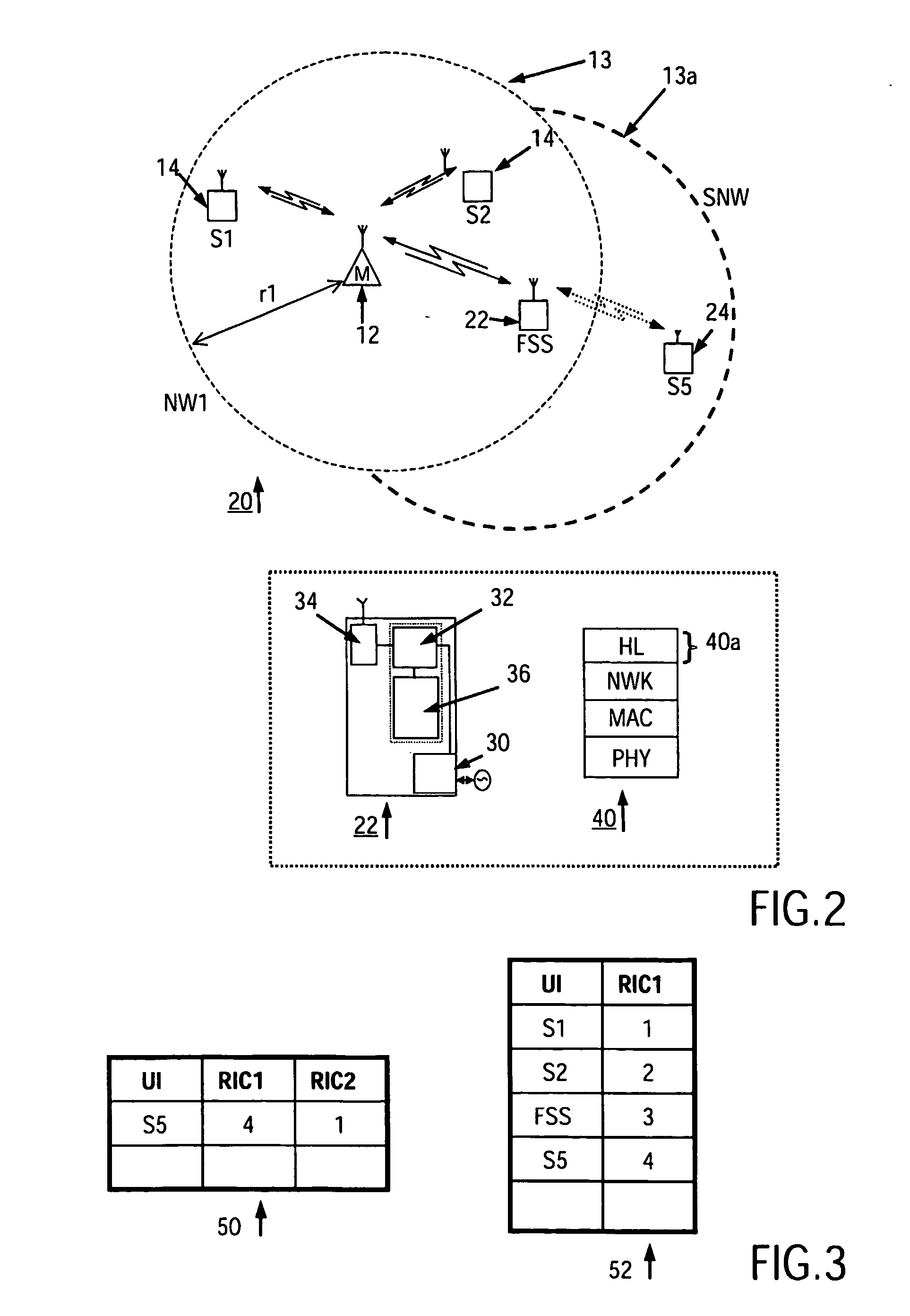Communication system with an extended coverage area
- Summary
- Abstract
- Description
- Claims
- Application Information
AI Technical Summary
Benefits of technology
Problems solved by technology
Method used
Image
Examples
example message
[0041] Example Message Exchange process
[0042] By following the process 58 of FIG. 4 the first secondary station 22 has stored in table 50 in memory 36 the radio code (RIC1) which the primary station has allocated to the further secondary station and also the radio code (RIC2) which it has allocated to the further secondary station 24. The further secondary station subsequently indicates a message as originating from itself by sending with the message its allocated RIC2. The further secondary station, on receiving such a message, looks up the associated RIC1 and transmits the message with the associated RIC1 value over the air to the primary station 12. This uplink portion of a message exchange process is illustrated by way of example in the flowchart 80 of FIG. 5.
[0043] Similarly, a message generated by the primary station 12 which is intended for the further secondary station 24 is transmitted with identity code RIC1 by the primary station. This is received by the first secondary ...
PUM
 Login to View More
Login to View More Abstract
Description
Claims
Application Information
 Login to View More
Login to View More - R&D
- Intellectual Property
- Life Sciences
- Materials
- Tech Scout
- Unparalleled Data Quality
- Higher Quality Content
- 60% Fewer Hallucinations
Browse by: Latest US Patents, China's latest patents, Technical Efficacy Thesaurus, Application Domain, Technology Topic, Popular Technical Reports.
© 2025 PatSnap. All rights reserved.Legal|Privacy policy|Modern Slavery Act Transparency Statement|Sitemap|About US| Contact US: help@patsnap.com



